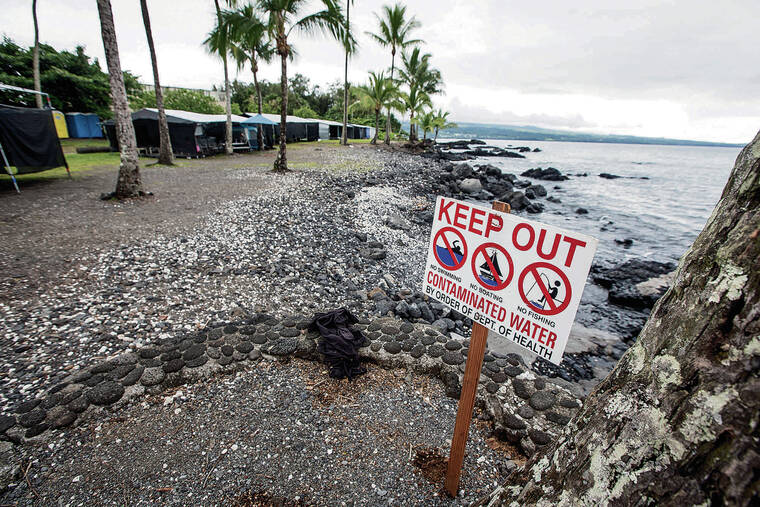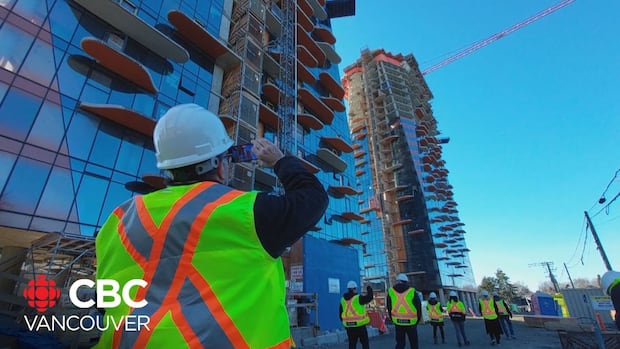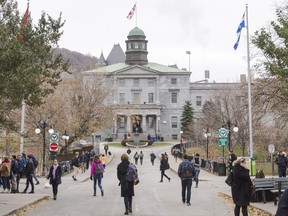
TRIBUNE-HERALD / 2017
A sign warns beachgoers of contaminated water at Puhi Bay in Keaukaha.
Sewage in Keaukaha is leaching into groundwater 10 times faster than previously believed, according to a study by University of Hawaii scientists.
Over two years, researchers traced the movement of wastewater and sewage from Keaukaha cesspools and the Hilo Wastewater Treatment Plant to the nearby shoreline. While they were able to confirm that sewage is reaching Puhi Bay from cesspools and the WWTP — something that community members have generally suspected — they were surprised by the speed of the sewage.
Steve Colbert, UH Hilo associate professor of marine science, said his team flushed dye through Keaukaha homes’ toilets and waited to detect traces of that dye along the shoreline, in order to determine how quickly sewage filters through the groundwater.
“The fastest detection we had was about 20 hours,” Colbert said. “Actually, it probably got there faster. It was already there by the time we got out there to detect it. … It caught us by surprise.”
Colbert said his team was able to detect traces at the shore from every dye test conducted in Keaukaha — some from cesspools more than 500 yards inland from the sea. Times ranged between 20 hours and three days, which he said is not long enough for natural processes to break down the contaminants.
“These are remarkably fast flow rates,” Colbert said, adding that previous estimates for how quickly wastewater filters through cesspools were 10 times slower.
Don’t miss out on what’s happening!
Stay in touch with breaking news, as it happens, conveniently in your email inbox. It’s FREE!
Colbert’s team also confirmed that the frequent stench of sewage that rises from Puhi Bay can be used as a general sign of the water’s quality. The team developed a public survey called the “Pilau-meter” — pilau is the Hawaiian word for “stink” or “rotten” — where beachgoers were able to report the scent of the bay.
The Pilau-meter’s results found correlations between reports of foul smells and state Department of Health notices about high levels of waterborne bacteria.
Ultimately, Colbert said the study most of all emphasizes the need for the state and county to invest in the area’s wastewater infrastructure.
The cesspools in the area present a hazard to Keaukaha’s groundwater, and the U.S. Environmental Protection Agency has deemed the aging and decrepit WWTP significantly deficient and ordered the county to correct the facility’s failures or face penalties.
As for the bay, Colbert said “he still goes to the beach,” but advised people to shower after swimming, to avoid swimming with open wounds and if the water smells like sewage.
———
Email Michael Brestovansky at mbrestovansky@hawaiitribune-herald.com.
#Study #confirms #sewage #leaks #Keaukaha










Leave a Reply